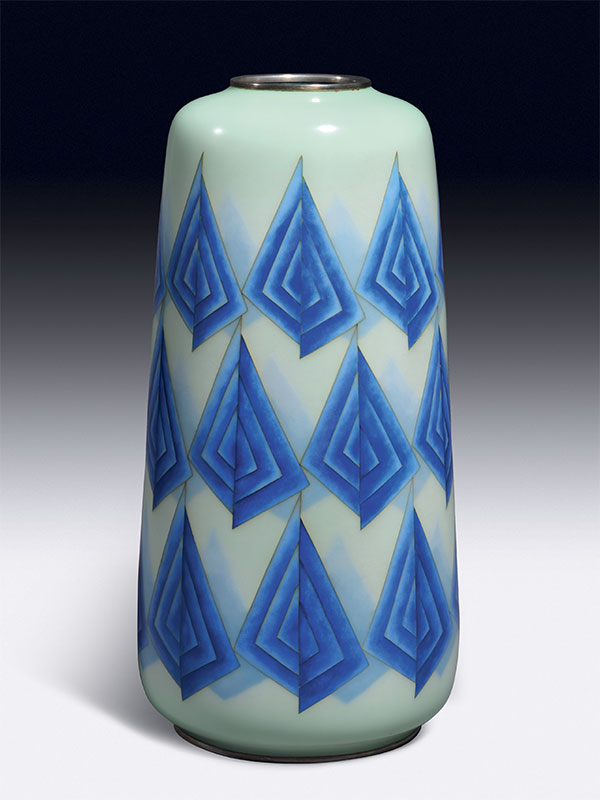Cloisonné enamel vase by Gonda Hiroo
Japan, Showa period, 1926 – 1989
A cloisonné enamel vase of baluster shape, supported on a small foot, the sides gradually tapering inwards towards a small mouth. The exterior of the vase is decorated with a pattern of triangular motifs in dark blue on a pale green ground, where they are shadowed underneath. Each of the triangular motifs is made up from dark and paler lines and divided in half in the middle. The base is inlaid with a silver mark that reads Hakuryuen (“white dragon garden”). A paper label pasted to the base reads Aoi fukei (green scenery). The vase is contained within a wooden box.
The artist Gonda Hiroo was active from circa 1970-2018 and beyond). He is related to the famous cloisonné artist Gonda Hirosuke (1865-1937). They both made work for the Ando Jubei company and signed their work with the Hakuryuen mark. Gonda Hiroo regularly exhibited at the Nihon Dento Kogei-ten (Japan Traditional Arts Crafts Exhibitions) between 1978 and 2011; at the 2001 exhibition he won the Bunkacho chokan sho, a president award given by Agency for Cultural Affairs of the Japanese Government.
昭和时代/权田广雄制珐琅花瓶
此瓶近乎直筒形,上窄下宽,小口大足,呈微微收口之态,器身线条优美。其通体以鸭蛋青为地,其上有多组重复的渐变蓝色三角形相拼凑之图案。圈足以嵌银丝落地点款——白龙花园。权田广雄(1970-)与日本珐琅艺术巨匠权田广助(1865-1937)出于同一家族并且均供职于安藤重兵卫家族的珐琅公司。“白龙花园”为权田广雄常用落款。广雄的作品曾于1978年至2011年间多次参展日本全国传统手工艺展。其本人曾于2001年获日本首相亲颁Bunkacho chokan sho大奖。

